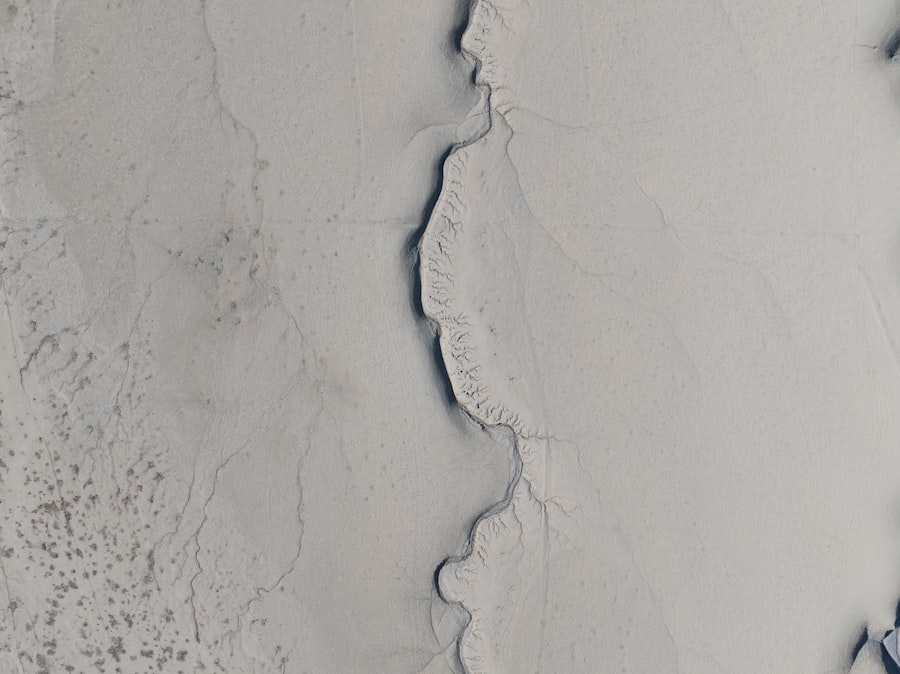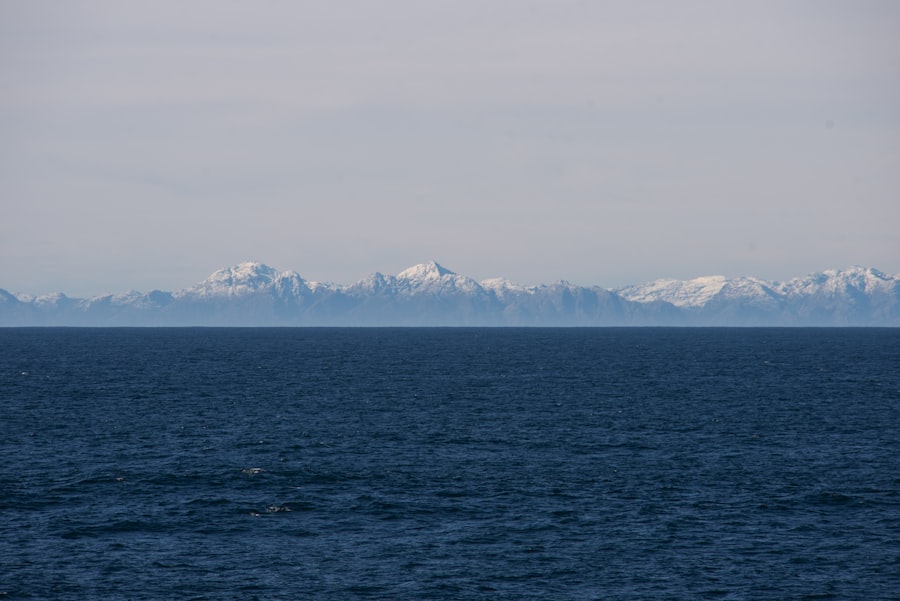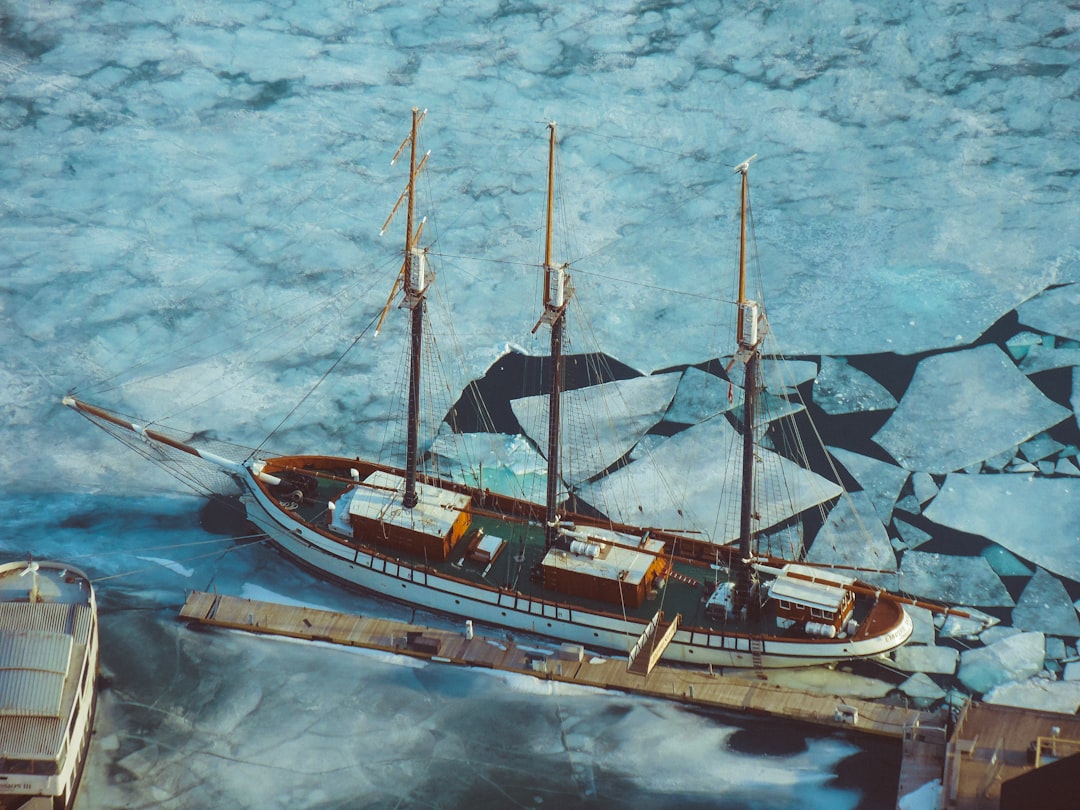The Drake Passage, a body of water situated between the southern tip of South America and Antarctica, is renowned for its tumultuous seas and unpredictable weather. Spanning approximately 600 kilometers, this passage serves as a critical maritime route for vessels traveling to and from the Antarctic region. The waters are named after Sir Francis Drake, the English explorer who navigated these treacherous seas in the late 16th century.
The passage is not only significant for its geographical location but also for its ecological importance, as it connects the Atlantic and Pacific Oceans, facilitating the movement of marine life and influencing global ocean currents. Navigating the Drake Passage is often considered a rite of passage for adventurers and explorers alike. The waters are notorious for their rough conditions, with waves that can reach heights of up to 15 meters during storms.
This unpredictability is largely due to the absence of land barriers, allowing winds to whip across the open ocean unimpeded. As a result, those who embark on a journey through the Drake Passage must be prepared for a range of experiences, from serene moments of calm to exhilarating encounters with nature’s raw power. Understanding the dynamics of this passage is essential for anyone planning a voyage to Antarctica, as it sets the stage for the adventure that lies ahead.
Key Takeaways
- The Drake Passage is a body of water between South America’s Cape Horn and the South Shetland Islands of Antarctica, known for its rough seas and challenging sailing conditions.
- Weather conditions in February can be unpredictable, with strong winds, high waves, and potential for storms, making it important to choose a sturdy vessel for the journey.
- When choosing a vessel for the journey, consider factors such as size, stability, and experience of the crew, to ensure a safe and comfortable passage.
- Packing essentials for the trip include warm clothing, waterproof gear, sturdy footwear, and seasickness medication, as well as any necessary travel documents and personal items.
- Safety precautions and emergency procedures are crucial, including familiarizing oneself with onboard safety protocols, wearing a life jacket, and following instructions from the crew in case of an emergency.
Weather conditions in February
February is often regarded as one of the best months to traverse the Drake Passage, as it typically offers more favorable weather conditions compared to other times of the year. During this month, summer reigns in the Southern Hemisphere, bringing milder temperatures and relatively calmer seas. Average temperatures in February can range from -2°C to 8°C, making it more comfortable for travelers embarking on their Antarctic expeditions.
The longer daylight hours also provide ample opportunities for exploration and wildlife observation, enhancing the overall experience. However, despite February’s reputation for better weather, travelers should remain vigilant and prepared for sudden changes. The Drake Passage is infamous for its rapidly shifting conditions, and even in summer, storms can arise unexpectedly.
Winds can pick up speed, and waves can swell dramatically, creating a challenging environment for navigation. Therefore, it is crucial for those planning a journey during this time to stay informed about weather forecasts and be ready to adapt their plans accordingly. Embracing the unpredictability of the Drake Passage can lead to unforgettable moments and breathtaking views that are unique to this remarkable region.
Choosing the right vessel for the journey

Selecting the appropriate vessel for a journey through the Drake Passage is paramount to ensuring a safe and enjoyable experience. Various types of ships are available, ranging from large cruise liners to smaller expedition vessels. Each option comes with its own set of advantages and disadvantages, depending on the traveler’s preferences and priorities.
Larger ships often provide more amenities and comfort but may lack the agility needed to navigate through rough waters effectively. In contrast, smaller vessels can offer a more intimate experience and greater maneuverability but may have fewer onboard facilities. When choosing a vessel, travelers should consider factors such as stability, size, and onboard services.
Modern expedition ships are designed specifically for polar waters and are equipped with advanced stabilizing technology to minimize motion during rough seas. Additionally, these vessels often feature ice-strengthened hulls, allowing them to safely navigate icy waters. Travelers should also take into account the crew’s expertise and experience in handling challenging conditions in the Drake Passage.
A knowledgeable crew can make all the difference in ensuring a smooth journey while providing valuable insights into the surrounding environment.
Packing essentials for the trip
| Item | Quantity | Importance |
|---|---|---|
| Clothing | 3 sets | High |
| Toiletries | 1 set | High |
| Medications | As needed | High |
| Travel documents | 1 set | High |
| Portable charger | 1 | Medium |
| Travel adapter | 1 | Medium |
Packing for a journey through the Drake Passage requires careful consideration of both comfort and practicality. Given the variable weather conditions, travelers should prepare for a range of temperatures and activities. Layering is key; lightweight thermal base layers, insulating mid-layers, and waterproof outer layers will help keep individuals warm and dry throughout their adventure.
Additionally, packing accessories such as gloves, hats, and scarves can provide extra protection against the biting cold winds that can sweep through the passage. In addition to clothing, travelers should not overlook essential gear such as binoculars for wildlife watching, cameras for capturing stunning landscapes, and personal medications for any specific health needs. A good pair of waterproof boots is also crucial for exploring wet or icy terrain upon reaching land.
By preparing thoughtfully and packing wisely, travelers can ensure they are well-equipped to enjoy their journey through this remarkable region.
Safety precautions and emergency procedures
Safety should always be a top priority when embarking on a journey through the Drake Passage.
Most reputable expedition companies provide thorough briefings on safety measures upon boarding their vessels.
These briefings typically cover essential topics such as life jacket usage, emergency evacuation routes, and communication protocols in case of an emergency. In addition to following onboard safety guidelines, travelers should also be aware of their surroundings while at sea. It is advisable to remain seated during rough weather conditions and to avoid moving around unnecessarily on deck when waves are high.
Understanding how to respond in case of an emergency—whether it be a medical issue or an unexpected change in weather—is crucial for ensuring personal safety and that of fellow passengers. By being proactive about safety measures and remaining vigilant throughout their journey, travelers can enjoy their experience in the Drake Passage with greater peace of mind.
Wildlife encounters in the Drake Passage

One of the most captivating aspects of traveling through the Drake Passage is the opportunity to encounter diverse wildlife that inhabits these waters. The passage serves as a vital habitat for various species of marine life, including seals, whales, and seabirds. Travelers may be fortunate enough to spot majestic humpback whales breaching or playful orcas swimming alongside their vessel.
The sighting of these magnificent creatures often leaves an indelible mark on those fortunate enough to witness them. In addition to marine mammals, seabirds such as albatrosses and petrels are commonly seen soaring above the waves. These birds are well-adapted to life at sea and can cover vast distances with minimal effort.
Observing their graceful flight patterns can be a mesmerizing experience for nature enthusiasts. Many expedition vessels offer guided wildlife watching excursions led by knowledgeable naturalists who provide insights into the behaviors and habitats of these animals. Such encounters not only enrich travelers’ understanding of marine ecosystems but also foster a deeper appreciation for the fragile beauty of nature.
Tips for avoiding seasickness
Seasickness is a common concern for many travelers embarking on a journey through the Drake Passage due to its notorious rough waters. However, there are several strategies that individuals can employ to minimize their chances of experiencing discomfort during their voyage. One effective approach is to choose accommodations on lower decks or midship areas of the vessel where motion is less pronounced compared to higher decks or bow sections.
Additionally, travelers may benefit from taking preventive medications prior to departure or using natural remedies such as ginger or acupressure wristbands. Staying hydrated and consuming light meals can also help alleviate symptoms associated with seasickness. Engaging in activities that distract from feelings of nausea—such as enjoying onboard entertainment or participating in wildlife watching—can further enhance comfort levels during turbulent moments at sea.
Navigation and route planning
Navigating through the Drake Passage requires careful planning and consideration due to its unpredictable nature. Experienced captains utilize advanced technology and weather forecasting tools to chart safe courses while accounting for changing conditions at sea. The route taken may vary depending on factors such as wind direction, wave height, and ice conditions encountered along the way.
Travelers should remain flexible regarding their itinerary as adjustments may be necessary based on real-time assessments made by the crew. This adaptability not only ensures safety but also allows for unique opportunities to explore lesser-known areas or witness extraordinary natural phenomena that may arise during transit through these waters. By trusting in the expertise of seasoned navigators, travelers can embark on an unforgettable journey filled with awe-inspiring sights.
Cultural and historical significance of the Drake Passage
The Drake Passage holds profound cultural and historical significance that extends beyond its geographical features. For centuries, it has been a site of exploration and discovery, attracting adventurers seeking new frontiers. Early explorers like Sir Francis Drake paved the way for future generations by charting these waters during their quests for trade routes and territorial expansion.
In addition to its exploration history, the passage has also played a role in scientific research and environmental conservation efforts focused on preserving Antarctica’s unique ecosystems. The region’s rich biodiversity has drawn researchers from around the world who seek to understand climate change’s impact on polar environments. By recognizing both its historical context and contemporary relevance, travelers can gain a deeper appreciation for the Drake Passage’s role in shaping human understanding of our planet.
Activities and entertainment on board
A journey through the Drake Passage offers more than just breathtaking views; it also provides an array of onboard activities designed to enhance travelers’ experiences while at sea. Many expedition vessels feature educational programs led by experts in various fields such as marine biology, geology, and history. These presentations allow passengers to learn about the unique ecosystems they are traversing while fostering a sense of connection with their surroundings.
In addition to educational opportunities, onboard entertainment options may include film screenings showcasing documentaries about Antarctica or interactive workshops focused on photography techniques for capturing stunning landscapes. Social gatherings allow passengers to share stories and experiences with fellow travelers while enjoying delicious meals prepared by talented chefs onboard. By engaging in these activities during transit through the Drake Passage, individuals can create lasting memories that complement their exploration of this remarkable region.
Arrival and disembarkation procedures
As travelers approach their destination after navigating through the Drake Passage, anticipation builds for what lies ahead in Antarctica. Upon arrival at designated landing sites or research stations, disembarkation procedures typically involve transferring passengers from the ship via small boats known as zodiacs or landing craft designed specifically for accessing remote areas. Travelers should be prepared for potential delays due to weather conditions or logistical challenges associated with landing operations in icy environments.
Once ashore, individuals will have opportunities to explore stunning landscapes filled with glaciers, icebergs, and unique wildlife habitats while adhering to guidelines set forth by expedition leaders regarding safety protocols and environmental conservation practices. In conclusion, embarking on a journey through the Drake Passage is an adventure filled with excitement, challenges, and unforgettable experiences. From understanding its geographical significance to preparing adequately for weather conditions and wildlife encounters, travelers can ensure they make the most of their expedition into one of Earth’s most remarkable regions.
With careful planning and an open mind ready to embrace nature’s wonders, individuals will undoubtedly create memories that last a lifetime amidst this breathtaking maritime landscape.
In February, the Drake Passage, a notorious stretch of water between the southern tip of South America and Antarctica, often presents challenging conditions for sailors and researchers alike. For those interested in exploring more about this treacherous yet fascinating region, a related article can be found on MyGeoQuest. This article delves into the geographical and historical significance of the Drake Passage, offering insights into its impact on global ocean currents and climate. To read more about this intriguing topic, visit the article on MyGeoQuest by clicking here.
WATCH NOW! Drake Passage: Earth’s Deadliest Waters Revealed
FAQs
What is the Drake Passage?
The Drake Passage is the body of water between the southern tip of South America and the northern tip of the Antarctic Peninsula. It is known for its rough seas and challenging sailing conditions.
Why is the Drake Passage significant?
The Drake Passage is significant because it is the shortest and most direct route between Antarctica and the rest of the world. It is also a critical area for the mixing of the world’s oceans, which has a major impact on global climate and ocean circulation.
What is the weather like in the Drake Passage in February?
In February, the weather in the Drake Passage can be quite harsh, with strong winds, rough seas, and the potential for storms. The average temperature ranges from 2°C to 8°C (35.6°F to 46.4°F).
What wildlife can be seen in the Drake Passage in February?
In February, the Drake Passage is a prime location for spotting a variety of wildlife, including whales, seals, and numerous species of seabirds. It is also a popular area for birdwatching, with species such as albatrosses and petrels being commonly sighted.
What are the travel options for crossing the Drake Passage in February?
Travel options for crossing the Drake Passage in February include expedition cruises and scientific research vessels. These trips typically depart from Ushuaia, Argentina, and make the journey to the Antarctic Peninsula, offering passengers the opportunity to experience the unique and remote environment of the region.
